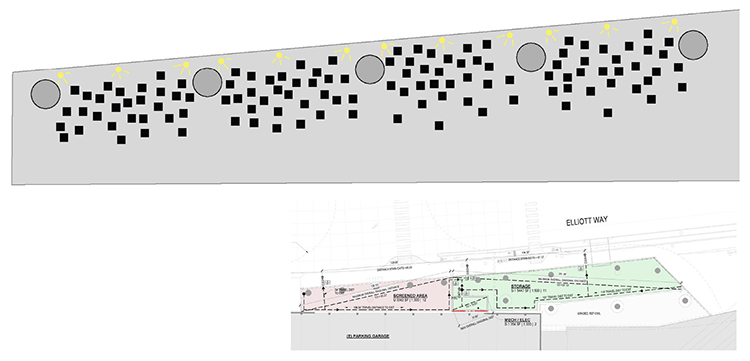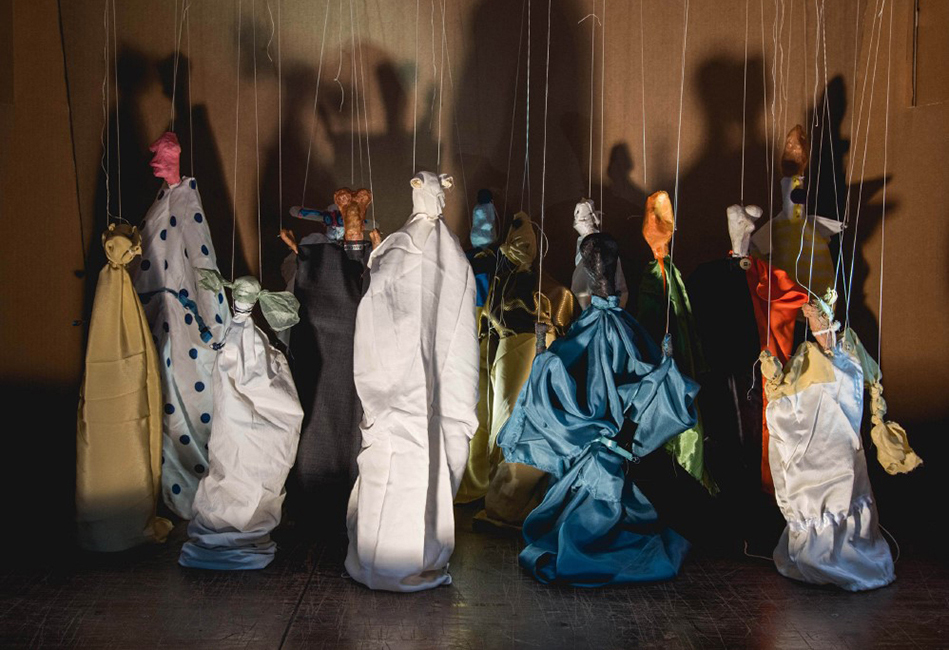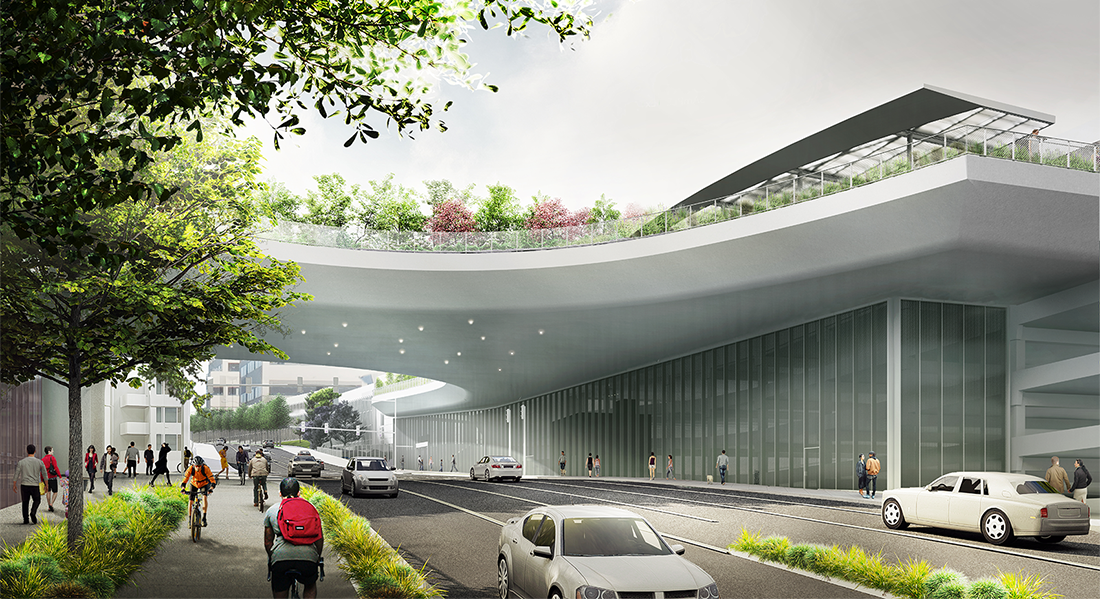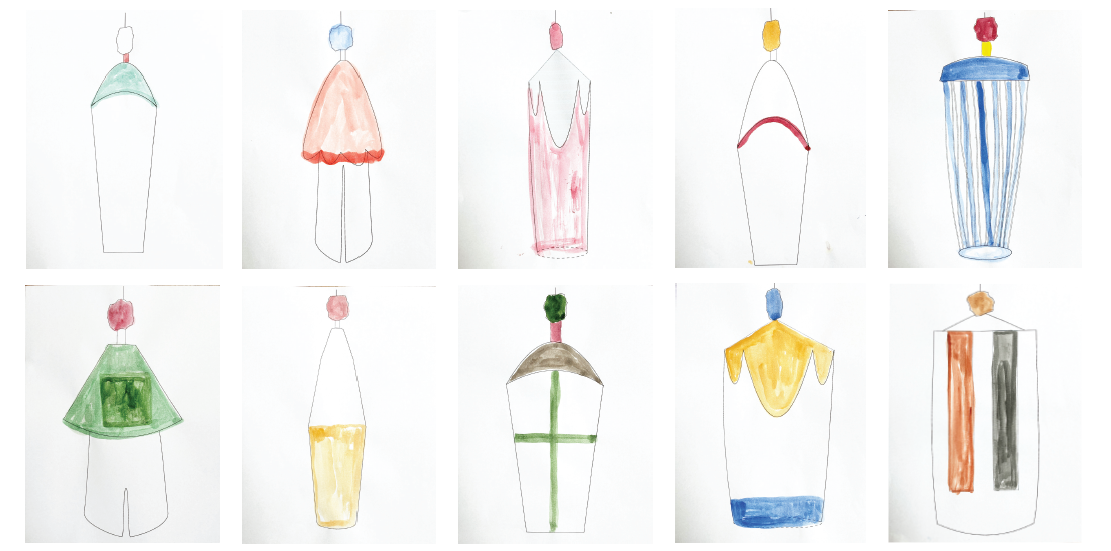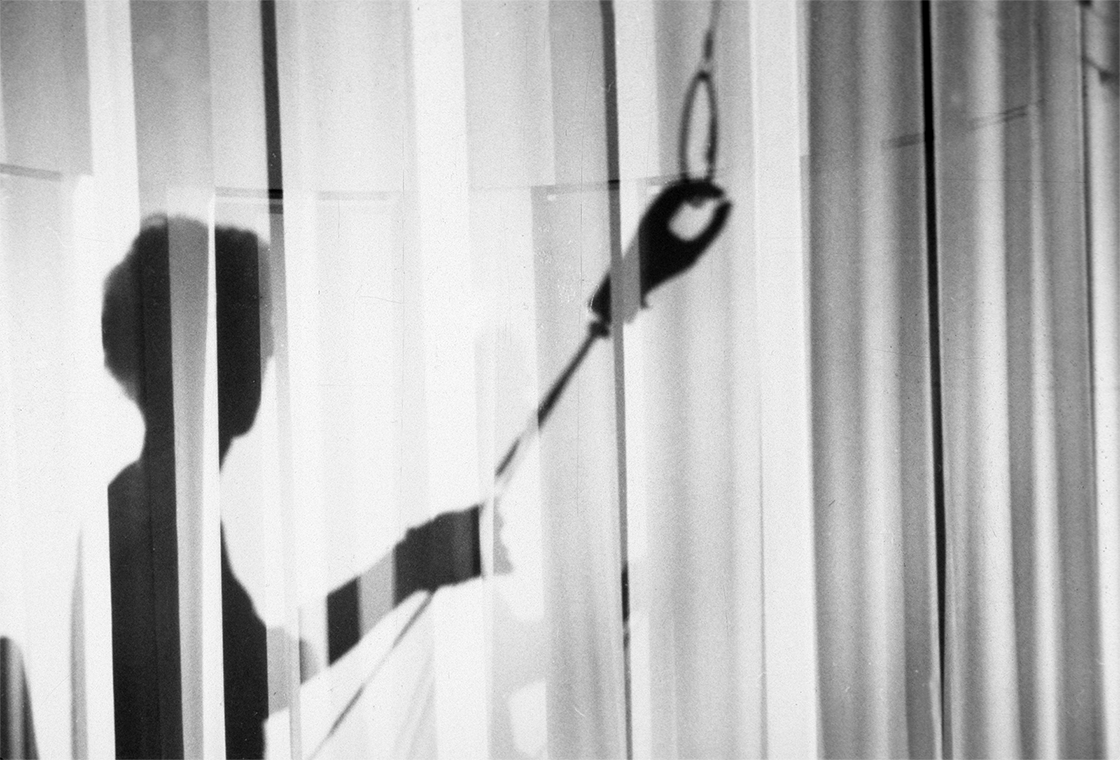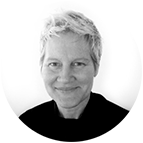
Ann Hamilton is developing a kinetic artwork that will be visible through the perforated screen located below the Overlook Walk pedestrian bridge.
Artist Statement
The project is currently developing in response to the unique conditions of the wall along Alaskan Way, which faces the street but also contains a space behind it. This "back of the house" will be animated with elements whose shadows will cast on the street's screen wall in a changing weather of light, motion and atmosphere.
This project proposes a congregation of figures, of undulating cloth and cast shadows, animated by a marionette-like mechanically driven system of overhead cables lifting and falling, resting and rising, in sequence.
Located behind a perforated screen wall in the triangular pocket of space between the street, Alaskan Way, and an existing multi-story parking garage, this unique condition makes a threshold space neither fully interior nor exterior. The site, framed by the raw industrial garage infrastructure, sets back, like a stone cave or grotto carved by water, into the waterfront’s steep hillside underneath the canopy of the newly constructed landscape walkway connecting the upper hillside and the cacophony of Pike Street Market to the tidal rhythms of the waterfront below.
Inspired by the threshold nature of the site—the joint between land and water, liquid and solid, and the hypnotic pattern of individual waves rocking, merging, and separating in a ceaseless field of motion—the sculptural forms, at once abstract and figurative, are brought to life. Just as a wave crests and falls, a sail hoists to catch the wind, and a hand raises and lowers to signal passage, this project will develop a choreographed movement of raising and falling, of compression and extension, drawing upon the ancient mechanisms of rope and pulley working with and against gravity’s pull.
These animating movements and their references to sailing and signaling also draw heavily on the gestures and features of string puppets or marionettes. The forms become figures of the kind one might imagine haunting the darkness of the cave-like garage setting. Cloths of varying weights, opacities, and structures, each selected for its longevity and durability, will be animated by the lifting and lowering of a cable structure. The way the material moves—its perception as a dynamic abstract expanse of cloth or an animated figure or something in between—is a consequence of the interactions between the hand of the cloth and the attachment of the suspended lines connecting it to the regular turnings of the mechanical drive. In this joint, what is regular and clock-like meets and dances with turbulence, the liquidity and unrepeatable variation of cloth in motion.
The collection of these 80-100 individual elements/forms/puppets/figures, suspended in the space along the 130 feet of sidewalk, both ritualistically greet and witness the street, the water, and the setting western sun. At turns slow and fast, turbulent and calm, the mechanized rhythmic sea of interconnected figures transforms from formlessness—a heap of cloth—to form and back again in cycles. The grotto or cave, its darkness conjuring an imaginative space, offers a fleeting glimpse of something alive.
While not physically accessible to the public, the project will be visible in multiple ways.
From across the street, the flickering movements of cloth catching air and light will signal presence, perhaps not unlike the ways in which a keen eye can detect a sign of life by the subtle change in the surface pattern of the water.
From the sidewalk, a sequence of cut slits in the corrugated and perforated screen will invite a zoetrope-like view to walking pedestrians. For the stationary passerby, peepholes will offer a fisheye aperture into the world on the other side of the wall.
From the garage, the apertures in the structure will form balconies of visual access down into and across the space, an elevated view to the forest of pulley lines, the cloth figures, and their animations.
In the cave-like space, the natural light will change throughout the day, bracketed by darkness and shade in the mornings and the raking light of the setting sun in the evening. The arc of the day’s light will become more and less visible as daylight meets and crosses with augmented artificial lighting. Both fixed and moving light sources will illuminate the cloth, some from inside the forms, producing a lantern-like glow, and as spotlights outside of them. This wash of illumination hitting the ceiling and the façade of the exposed garage produces a second layer of animation, as the lifting and lowering movement of the forms is amplified by the projection of light and shadow on the surrounding surfaces.
